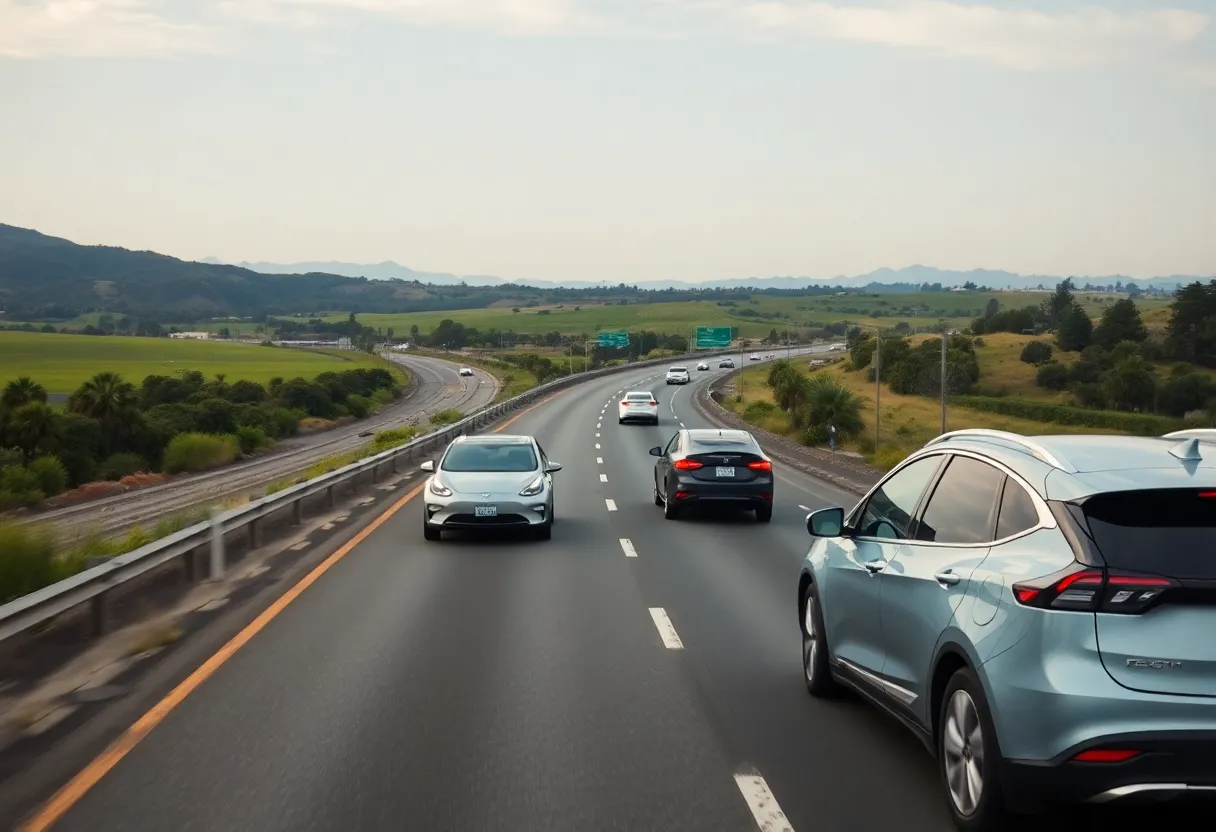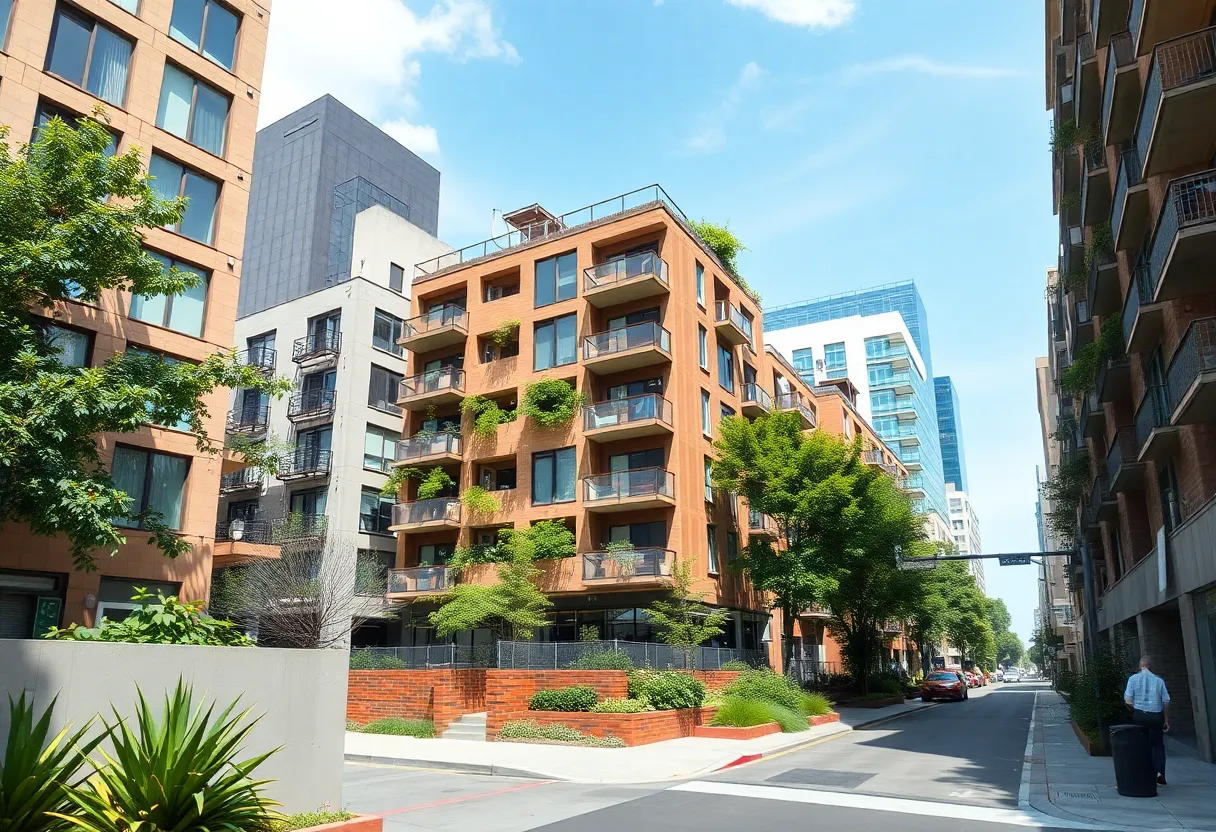News Summary
California is at a critical juncture as the U.S. Senate deliberates resolutions to block the state’s vehicle emissions standards. If passed, these resolutions could undermine California’s goal of phasing out gas-powered vehicles by 2035, a significant move in addressing climate change. The debate highlights tensions between state and federal authority over environmental regulations, with concerns over electric grid capacity and public support for electric vehicles looming large.
California is bracing for a pivotal decision as the U.S. Senate prepares to vote this week on resolutions that aim to block the state’s stringent vehicle emissions standards. These proposed resolutions could significantly affect California’s ambitious plan to phase out the sale of new gas-powered vehicles by 2035, a move seen as crucial in the fight against climate change and air pollution.
The Senate Majority Leader, John Thune, has announced the consideration of the House-passed resolutions, suggesting a final vote could occur as soon as this week. If passed, these resolutions would roll back California’s innovative emissions regulations, which many view as an essential part of reducing vehicular emissions over the coming decade.
Supporters of the Senate resolutions argue that California’s emissions rules would effectively impose a nationwide mandate for electric vehicles, which they claim could have adverse effects on consumers, the economy, and the energy supply. Thune expressed concerns that the state’s policies represent an “improper expansion” of the Clean Air Act.
California has long been allowed to establish more rigorous vehicle emissions standards than federal regulations due to its significant air pollution challenges. In 2020, Governor Gavin Newsom unveiled a bold plan to ban the sale of new gas-powered vehicles by 2035, implementing requirements for automakers to sell an increasing percentage of zero-emission vehicles. By 2027, the target is for 43% of new sales to be non-polluting vehicles, increasing to 68% by 2030, and ultimately aiming for 100% zero-emission sales by 2035. Existing used gas vehicles will remain available, along with plug-in hybrids and hydrogen-powered cars.
The current consideration by the Senate is notable, especially following the Trump administration’s earlier decision to revoke California’s enforcement authority over its emissions standards—a power that was later restored under the Biden administration. As it stands, more than a dozen states have adopted California’s robust emissions policies, although some, like Vermont, have paused their enforcement due to ongoing negotiations and evaluations.
Opposition among Senate Democrats is strong, with many expressing concerns not only about the rollback of California’s standards but also about the overall legislative process involved. Democratic leaders have raised alarms regarding the potential long-term implications for clean air legislation, describing the techniques employed in these resolutions as akin to a “nuclear” option that lowers the threshold for legislative decision-making.
As this debate unfolds, further concerns have emerged regarding California’s electric grid. Experts worry whether it can handle the anticipated surge in electric vehicle adoption, particularly if sales mandates increase rapidly. Despite these concerns, California continues to push forward with its climate goals, aiming for net-zero greenhouse gas emissions by 2045 while enhancing its electric charging infrastructure.
Recent statistics indicate that California residents are increasingly favoring electric vehicles, contributing substantially to national EV registration numbers. The state has also implemented programs to support infrastructure development, such as the installation of curbside charging stations in urban areas, initiated in San Francisco to assist residents without private garages. This charging initiative, which began on Fillmore Street, aims to facilitate greater access for apartment dwellers and is crucial for addressing concerns over charging availability.
The cost of public charging currently ranges between $1 and $5 per hour. This pricing structure plays a vital role in supporting urban electric vehicle owners, who rely on convenient charging options. However, challenges remain; for instance, major companies such as Uber have cited difficulties in meeting their electric vehicle targets due to high prices and inconsistent government support for EV policies.
On a national level, federal tax credits are available to incentivize electric vehicle purchases, but if the proposed resolutions are passed, there may be reductions in these incentives. California’s ambitious plans include an aim for 25% of private vehicles to be electric by 2030 and 100% by 2040; achieving these goals will necessitate a significant ramp-up in public charging infrastructure to support an expanding electric vehicle market.
Deeper Dive: News & Info About This Topic
- San Francisco Chronicle: Electric Car Costs in California
- Wikipedia: Electric Car
- AP News: Senate to Vote on California’s Vehicle Emissions Standards
- Encyclopedia Britannica: California
- San Francisco Examiner: Uber EV Targets
- Google Search: Electric Vehicles
- CBS News: Curbside EV Chargers in San Francisco
- Google News: California Electric Vehicles
- Charged EVs: Public Curbside Chargers Installed
- Google Scholar: California EV Adoption

Author: STAFF HERE HOLLYWOOD
The Hollywood Staff Writer represents the experienced team at HEREHollywood.com, your go-to source for actionable local news and information in Hollywood, Los Angeles County, and beyond. Specializing in "news you can use," we cover essential topics like product reviews for personal and business needs, local business directories, politics, real estate trends, neighborhood insights, and state news affecting the area—with deep expertise drawn from years of dedicated reporting and strong community input, including local press releases and business updates. We deliver top reporting on high-value events such as the Hollywood Bowl summer concerts, the Hollywood Christmas Parade, film premieres at TCL Chinese Theatre, and festivals at the Magic Castle. Our coverage extends to key organizations like the Hollywood Chamber of Commerce and Visit Hollywood, plus leading businesses in entertainment, dining, and tourism that define the local economy. As part of the broader HERE network, including HERELosAngeles.com, HEREBeverlyHills.com, HEREAnaheim.com, and HEREHuntingtonBeach.com, we provide comprehensive, credible insights into Southern California's dynamic landscape.





